In Her Own Words: Kaia Gerber on Modeling, Her Mother, and MeToo
I GREW UP AROUND THE WORLD of modeling and fashion—it’s been familiar to me as long as I can remember. When most kids had picture books, I had photography books. Herb Ritts portraits lined my walls. But the idea of what a model really does is a difficult concept for a child to understand.
My mom [Cindy Crawford] always made a point of creating a healthy disconnect. She would leave her work in the studio—when she got home, the first thing she would do is go upstairs and take off her makeup. Take off the lashes. Just take everything off. At home, she was just my mom, and for that I am forever grateful. I didn’t really grasp the concept of what her work meant until later, when I watched her do it. I didn’t know what Naomi Campbell, for example, did, either—I just knew she was my mom’s friend. Models were people long before I understood them as models.
Eventually I developed an interest in modeling myself. When I was 13, I signed with an agency and began taking small jobs. While it was a young age to start, I was also in an unusual position: By that time, modeling wasn’t a foreign world to me. From my mother I had the kind of knowledge going into it that most girls don’t get. (I have an incredible admiration, by the way, for the brave young women who enter the industry without this kind of insight.) Of course, many things can only be learned from firsthand experience, but I felt secure knowing the path I was about to take. Also, most of these early jobs included members of my family or were shot by people who were far from strangers. I felt safe and protected: That was the most important thing. Of course, my age also imposed some natural limits: I couldn’t travel without a chaperone, for instance, and I held off on doing runway until I felt I had the confidence and the right mind-set for such an intense work schedule.
I was 16 when I walked my first runway, at Raf Simons’s spring 2018 show for Calvin Klein. Walking shows is such a strange thing because we all walk every day—but when you’re suddenly wearing designer clothes and there are more eyes on you than usual, you can lose that natural ability. I remember seeing my older brother, Presley, front row, which gave me the extra bit of loving support I needed.
I’ve walked every season since—but until now I haven’t appeared much in fashion magazines. Shortly after my first show, Vogue and other publications adopted new rules regarding age limitations within the industry—mainly that no model under the age of 18 could appear in editorials on their pages—and called on the rest of the fashion industry to join them. The rules were made as the fashion world began to reckon with sexual harassment and assault issues amid the #MeToo and Time’s Up movements. Models began speaking up and speaking out, making it known that our industry was suffering from the same problems. And not just our industry, either—every industry. All people deserve respect and safety in their place of work, no matter their position or title, so though these new rules limited my work, I was not conflicted about them for a moment. They have affected the industry for the better in a lot of ways. It feels all of us are more protected—that our voices are being heard and encouraged and supported.
In the short time I’ve been modeling, I’ve noticed other positive shifts, too. At runway shows and on set, people are more aware of everyone’s comfort. Communication is more open. In an industry where people are constantly touching you, even the little things matter: Being asked, “Can I unbutton your shirt?” or “Can I tuck your shirt in?” goes a long way. When people are comfortable and feel safe, it shows in the final product. The best art is produced in a space where everyone feels they have the freedom to be themselves.
For most of my life, I’ve been the youngest person in the room—oftentimes I still am. But that has never made me feel less than anyone else. My parents never had a “kids’ table” and made a point never to isolate my brother and me because of age. If they had friends over, we were always included—we were expected to make conversation with whomever we were sitting next to, no matter how old they were, and I think that played a huge role in growing my confidence.
This fall marked my fifth fashion season. Among other things, modeling has given my mom and me something new to bond over. I didn’t really know what questions to ask her until I found myself immersed in this world that she knows so much about. (This has also led to some funny moments: In the beginning, when I’d complain to her about this or that, she would simply say, “I’ve been doing this a long time—that’s just not going to work here.”)
As much insight as my mom could give me, there are some things I simply had to experience on my own. The industry is very different today—for one thing, social media transformed how models interact with the world. We now have outlets to share our own voices—and to support others who are doing the same.
Social media also changed the way the world perceives models. We used to see them as a kind of fantasy that was a bit removed from the real world. And while that magic is dimmed a little now, I believe it’s for the better. I think it’s cool that we get to see everyone looking like themselves—for a young girl to realize, Okay, they don’t always look like that.
It will be interesting to see how all of this affects the longevity of modeling careers—I think my generation may be the guinea pigs in this respect as we discover what that broken barrier between fantasy and real life will ultimately mean. The most important thing to me, however, is education—whether that includes college or not. I graduated early from high school, with all the credits needed to someday attend college; in the meantime, though, I’m learning more—both in front of the camera and away from it—than I ever thought possible.
If my mom is any example, that career longevity seems to be increasing: She’s just as involved in the industry now as she was in the ’90s. It has been surreal to see iconic cultural moments and figures from that decade—voguing, RuPaul—come full circle. It’s something that really hit home when I walked in Versace’s spring 2018 show just before Donatella staged a surprise supermodel reunion. For the finale, she brought out my mom, Naomi Campbell, Claudia Schiffer, Helena Christensen, and Carla Bruni. That was the first time I fully grasped the significance and influence these women had—and continue to have. On top of that, I felt so very fortunate to have the rare opportunity to work with my mom. In my childhood home, we had a Herb Ritts portrait hanging in the hallway—the one where all of these iconic supermodels are naked and holding each other. As a young girl, I only understood their influence on me personally—I didn’t realize their impact on the culture of the world I was about to enter. When that final curtain opened at the Versace show and they were all standing there, everyone backstage started cheering and tearing up. I did, too—I finally got it.
From day one, people in the industry were often taken aback by my resemblance to my mom. As I get older, it happens even more, and it’s not just a visual thing: It’s everything from our mannerisms to our voices. It used to be that I didn’t see it at all, but now I will look at a picture and have to take a moment before realizing which one of us it is. But the biggest compliment is when someone says I act like my mom. Beyond her beauty and obvious appeal, she has always been my hero and my role model because of the way she treats people and the lens that she sees the world through, and that’s something for which I’m beyond grateful.
If you’re still having trouble telling us apart, though, a quick tip: My mom’s the one with the mole.
See Kaia Modeling the Designs from the CVFF Finalists:
In Her Own Words: Kaia Gerber on Modeling, Her Mother, and MeToo Gallery
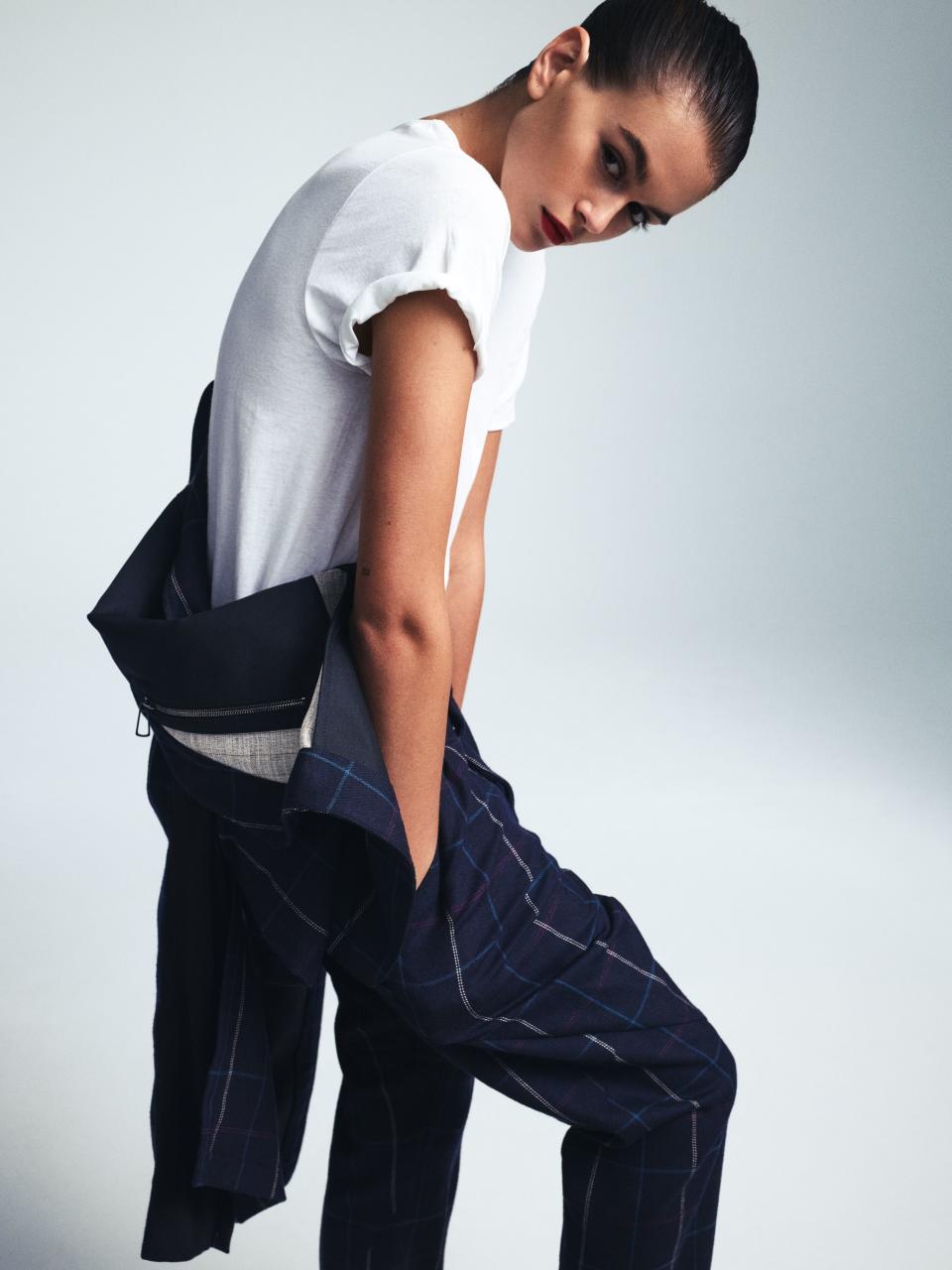
Abdul Abasi, 38, and Greg Rosborough, 35, use dead-stock textiles to modify traditional tailored pieces with a futuristic bent; colors are slick, and the cuts are forward-thinking. Abasi—who spent his early years after high school in the U.S. Army and working for NATO— describes their label, which embraces the technological and the biological, as “anatomically informed, architectural, and soulful.” As far as inspiration goes, Rosborough—who cut his design teeth at Ralph Lauren— cites Elon Musk, while Abasi looks to Mother Nature. Abasi Rosborough jacket and pants. Rag & Bone T-shirt.
Fashion Editor: Tonne Goodman.
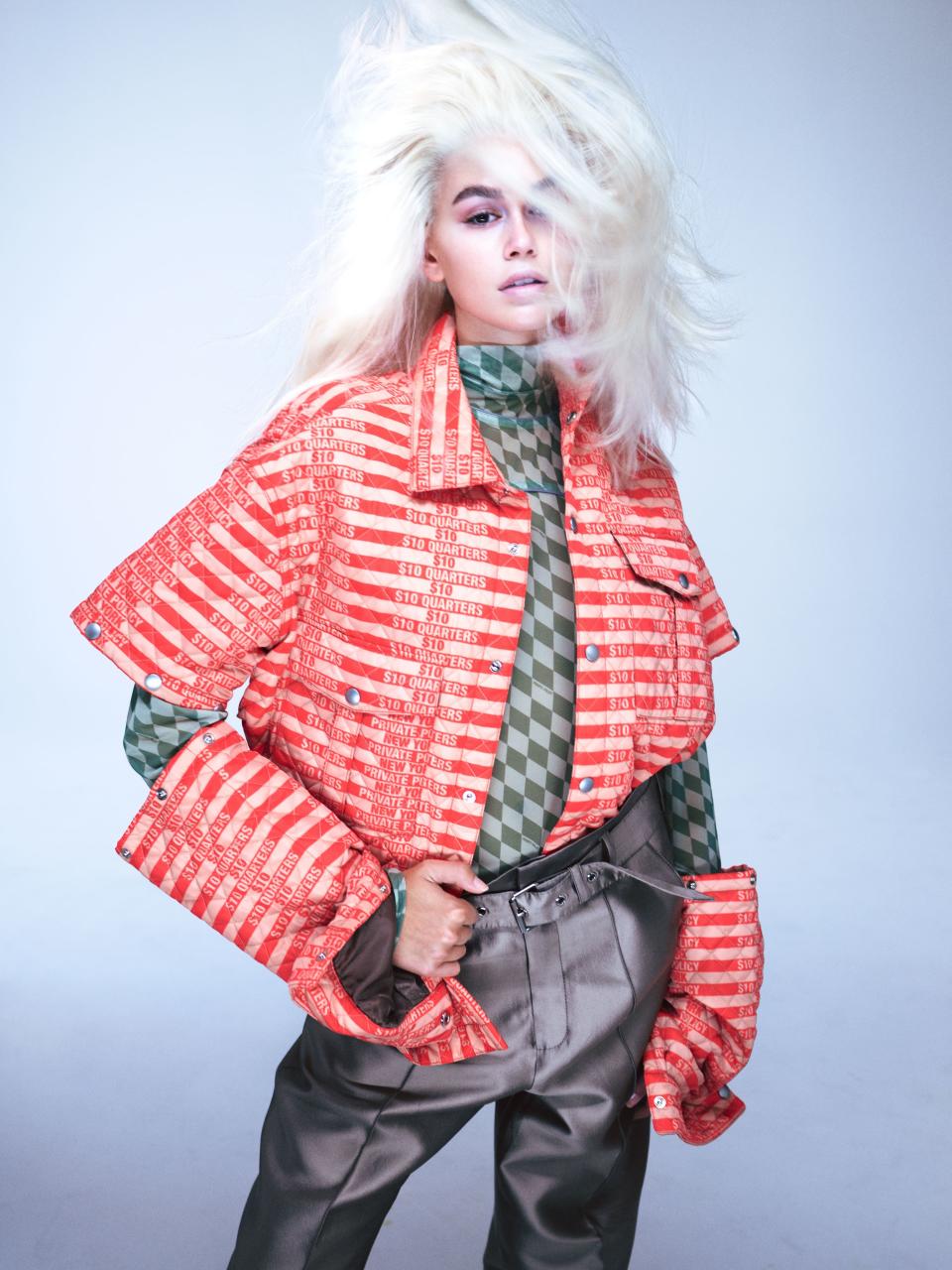
“We see our brand as a news outlet,” says Siying Qu, 26, of the genderless label she and fellow Chinese-born, Parsons- trained designer Haoran Li, 27, founded in New York in 2013. (“It is very rewarding when we prove to people how fashion can be used to express serious and sometimes complex topics,” adds Li.) Their latest collection delivers us clothes to wear to the revolution, with textiles offering enough durability and protection to incite its wearers to “protest at any time,” as Li says. Private Policy quilted, snap-button jacket and pants.
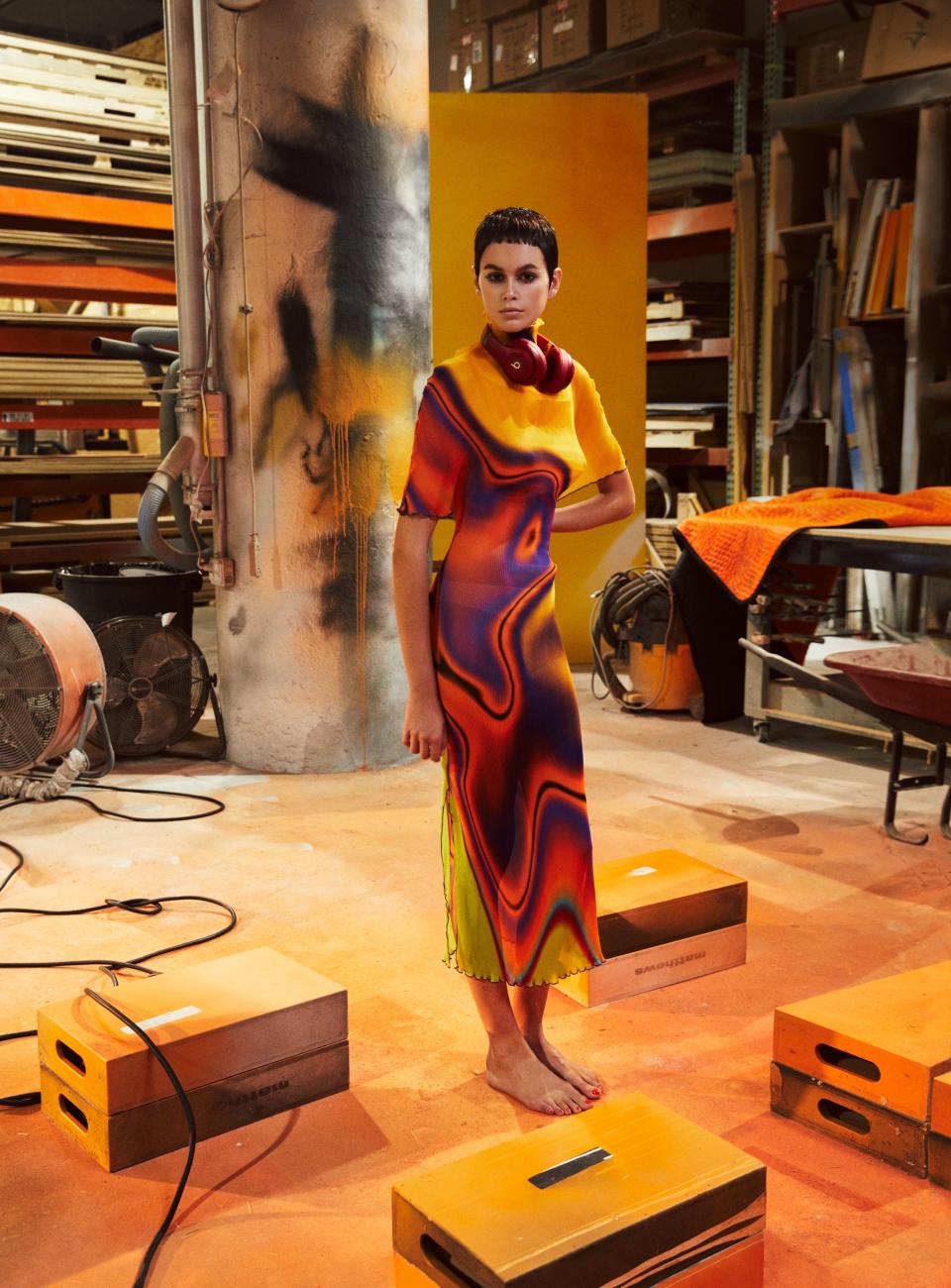
The Mexican-born designer Victor Barragán, 27, describes his aesthetic in two simple words: “sex positivism.” Championing gender in all its iterations, Barragán flouts any and all constrictions on freedom with slinky dresses, crop tops, and tailoring for everybody, with the result being an almost impossible coolness—and, in the larger realm, “visibility for my community,” as Barragán puts it. Barragán lettuce- hemmed dress. Beats Studio3 Wireless headphones.
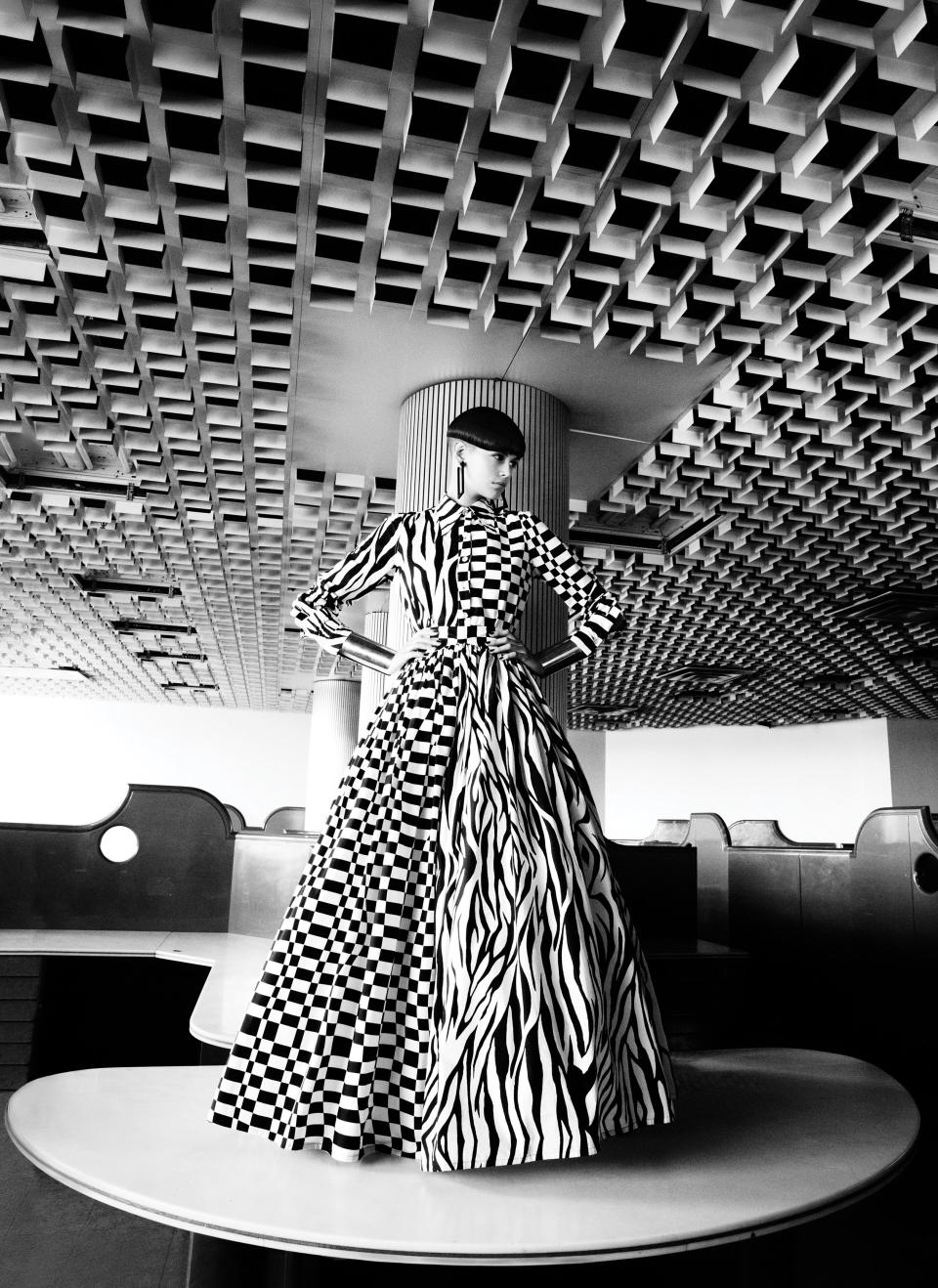
While his contemporaries are mining the aughts for fashion cues, Bushwick, Brooklyn– based Christopher John Rogers, 25, prefers the va-va-voom of the 1980s with its dramatic proportions and oversize flounces and pleats. And though he finds inspiration in Abstract Expressionism, the Baton Rouge–born designer describes his Fashion Fund experience as surreal: “I feel like it isn’t actually happening!” he says. Christopher John Rogers optical-illusion shirt and skirt. Rebecca de Ravenel earrings.
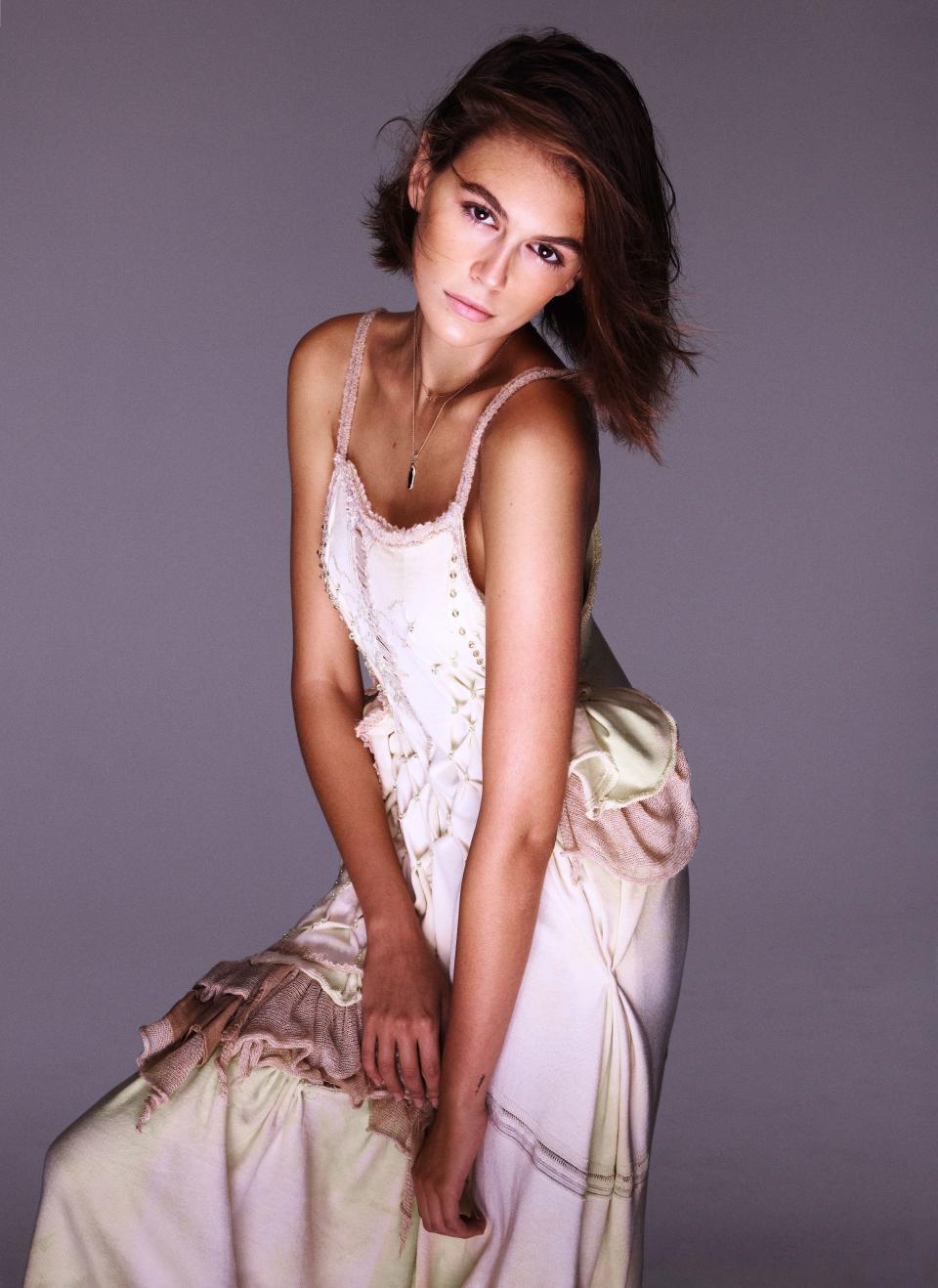
The six-year-old label from Brooklyn-based Raffaella Hanley, 30, isn’t afraid to indulge in whimsy. Along with mere clothes, Hanley aims to deliver “a unique emotional and social value,” she says. Hers are pieces with a covert sex appeal— and a palpable nostalgia for an unfettered and unbound creative freedom, replete with bows, bedazzlements, and ruffles for no reason. (A sustainable approach that incorporates upcycling is mere icing on the cake.) Lou Dallas dress. Necklaces by Eva Fehren and Scosha.
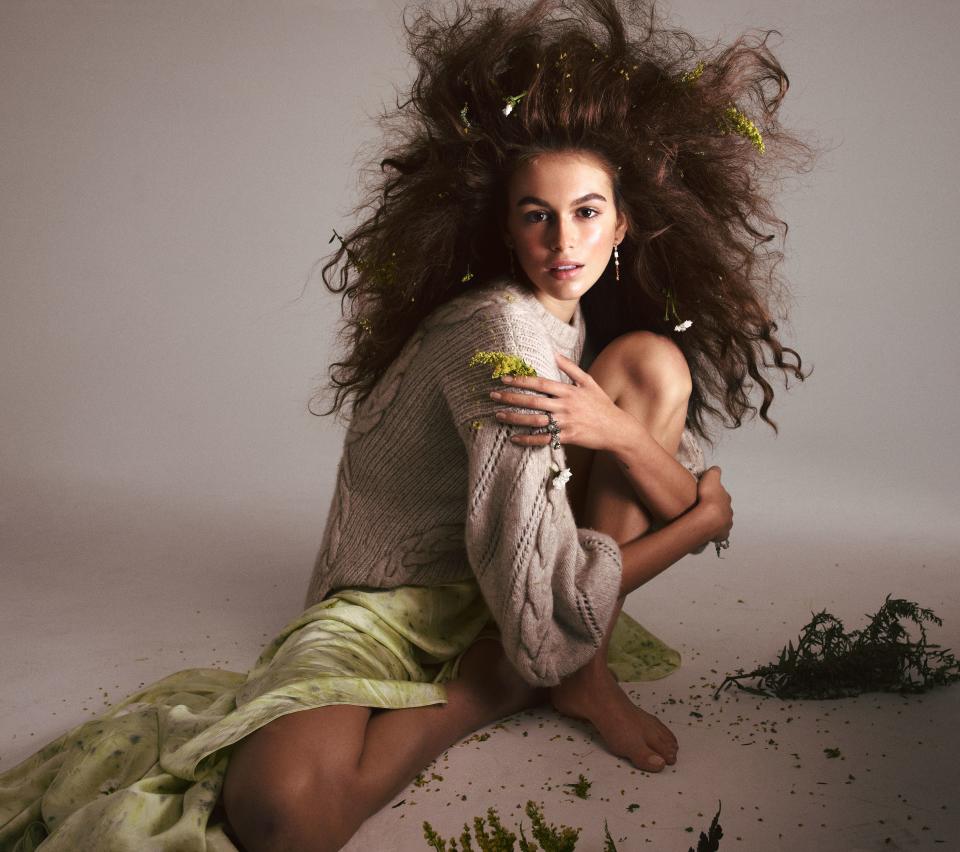
Though the Madrid-born designer Alejandra Alonso Rojas, 34, is a fourth-generation hand-knitter, her label also offers everything from elegant satin slip dresses to woven woolen trousers. Alonso Rojas, now based in New York, says she hopes to instill “Spanish tradition and sophistication influenced by my modern life.” Part of that contemporary sensibility: a commitment to sustainability. “Our development- and-production process,” she says, “makes for inherently slow fashion.” Alejandra Alonso Rojas sweater and skirt. Scosha earrings. Lou Dallas x Aurelia Cotton rings.
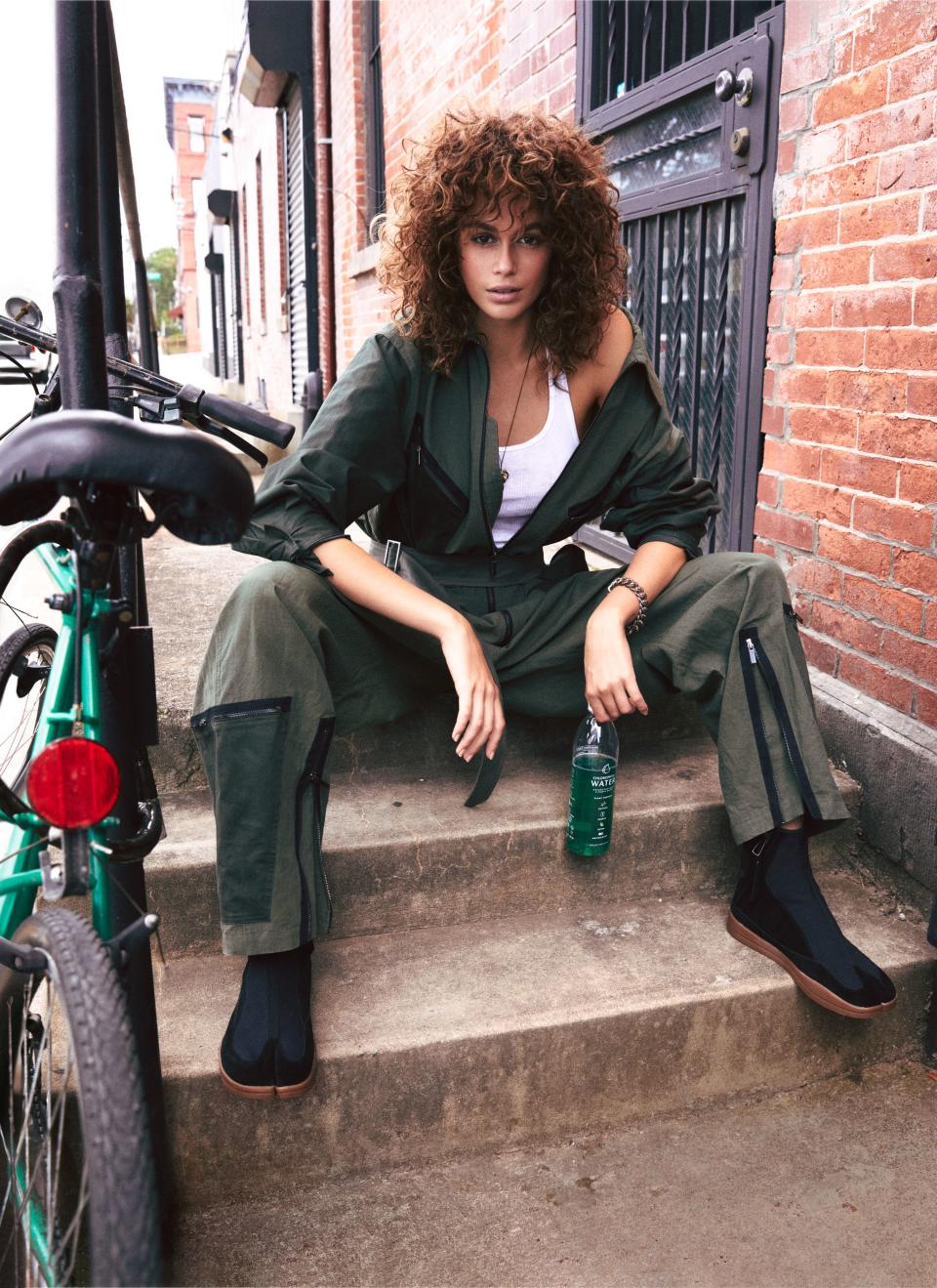
L.A.-based designer Natalie Ratabesi, 41, eschews dainty dresses for empowered separates. Trousers are cut every which way—a zipper here, a pleat there—while jackets come with a surprise drawstring, equal parts form and function. They’re classic pieces that seem to say, Don’t underestimate me. “I’m not exactly a newcomer,” says Ratabesi, who’s worked everywhere from John Galliano to Oscar de la Renta. “But being part of the Fashion Fund is incredibly exciting.” TRE by Natalie Ratabesi jumpsuit. Abasi Rosborough boots.
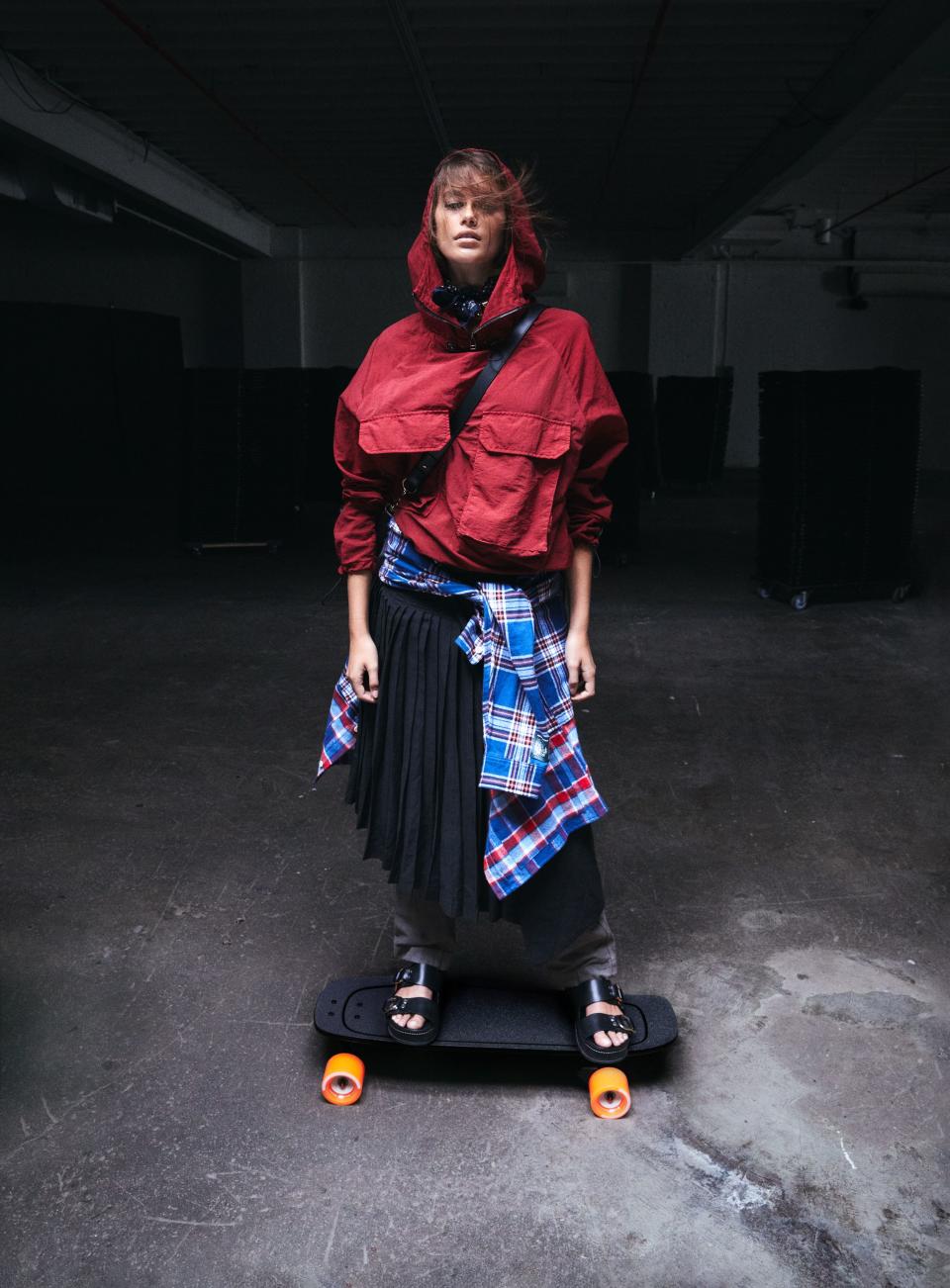
The Atlanta-born, L.A.-dwelling designer Reese Cooper, now 21 (he put out his first collection when he was 18), doesn’t need to look far to stoke his creativity. “My inspiration over the last few years has been exploring my new home of California,” he says, and his work shows it: What could be merely slouchy looks careful, and most everything is festooned with a hoodie. Reese Cooper anorak, shirt, skirt, and pants. Proenza Schouler crossbody bag. 3.1 Phillip Lim sandals.
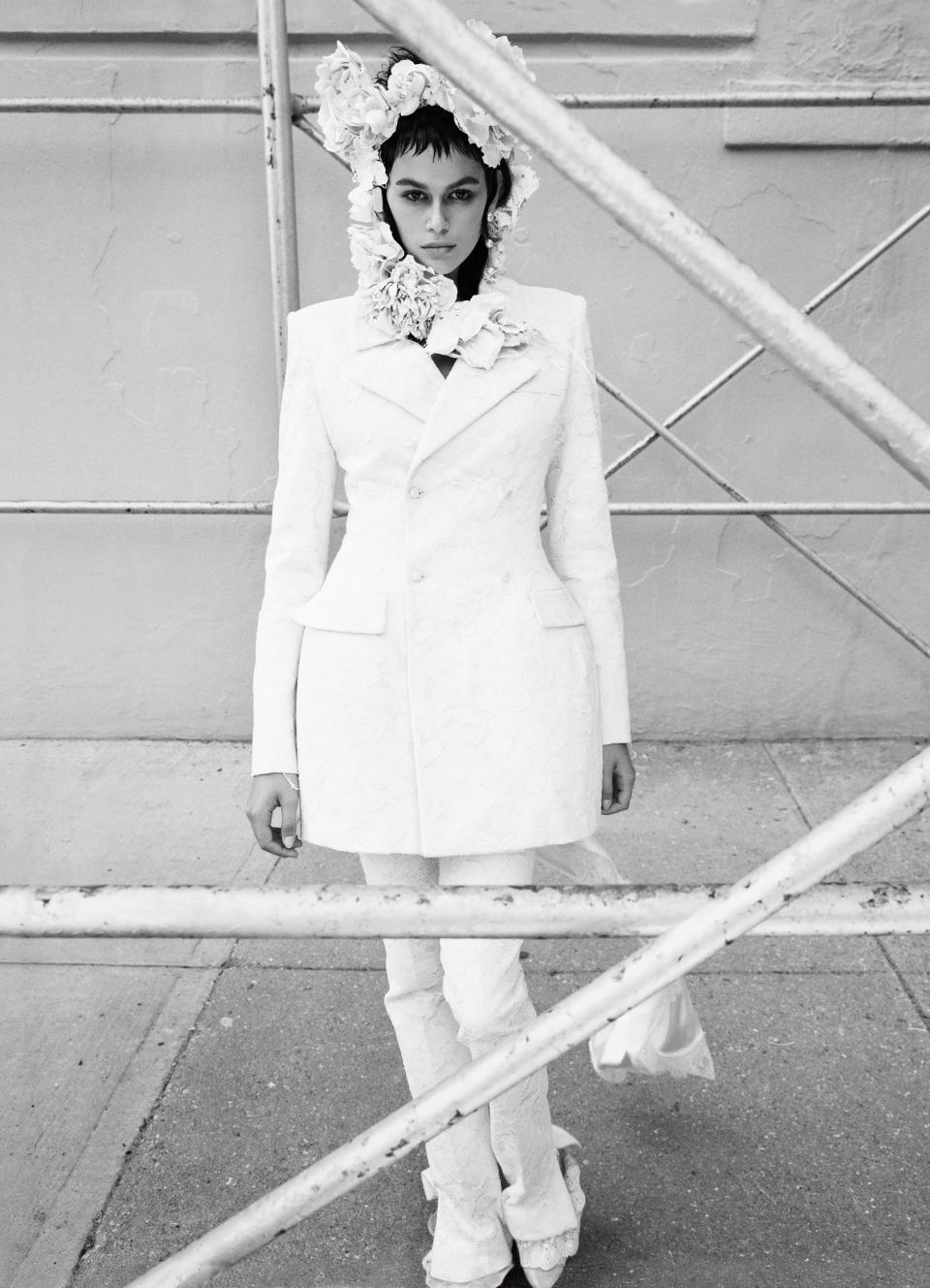
Danielle Hirsch of Danielle Frankel delivers us a first in Fashion Fund history—a bridal-designer finalist. Her label provides an antidote for those brides allergic to the strapless cupcake wedding dress—think brocade suits, Fortuny-esque gowns, and satin columns in shades of pearl, bone, and ecru. “I am slowly making it okay for a woman to walk down the aisle in something new,”she says. (For her own wedding, Hirsch, now 30, wore a vintage trench with a silk-faille shirtdress inspired by one of her fiancé’s button-down shirts.) Danielle Frankel structured jacket, pants, and earring. Brother Vellies mules.
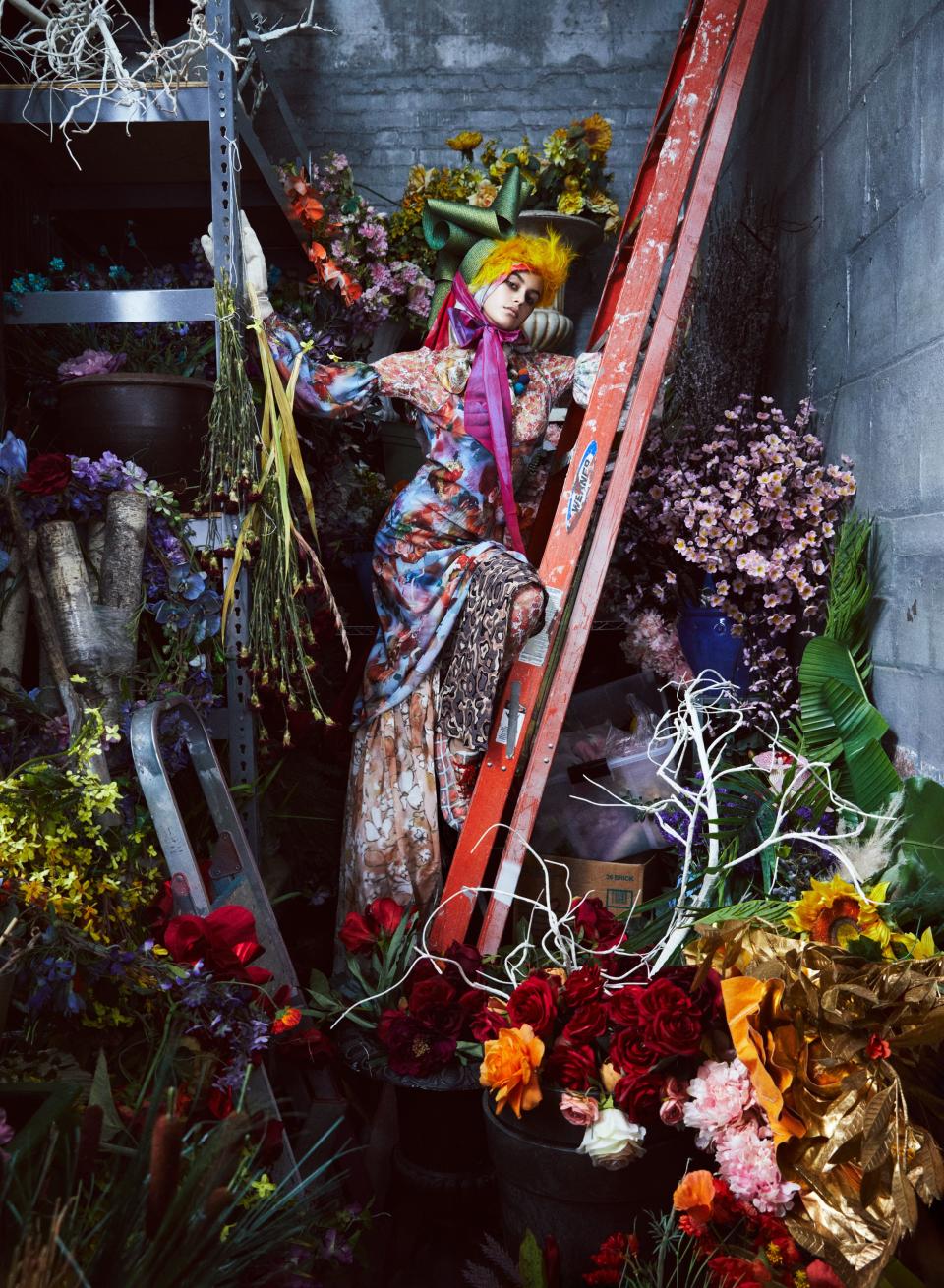
Few designers are as staunchly dedicated to the environment as Hillary Taymour, 32, of Collina Strada, who uses recycled and vintage dead-stock fabrics exclusively— and has banned single-use plastics from her Chinatown, Manhattan, studio. But while she may have a less-is-more philosophy to consumption, her aesthetic is anything but minimalist as prints clash elegantly in ecstatically layered looks. “If people see my clothes and feel like they can engage with the environment in a more caring and sustainable way,” says Taymour, ” I’ve done my job!” Collina Strada dress, bodysuit, skirt, and gloves. Collina Strada x Hoka shoes. Rebecca de Ravenel earrings (worn as necklace). In this story: hair, Shay; makeup, Dick Page. Produced by Day Productions. Set design by Kyle Hagemeier and Mary Howard for Mary Howard Studio.
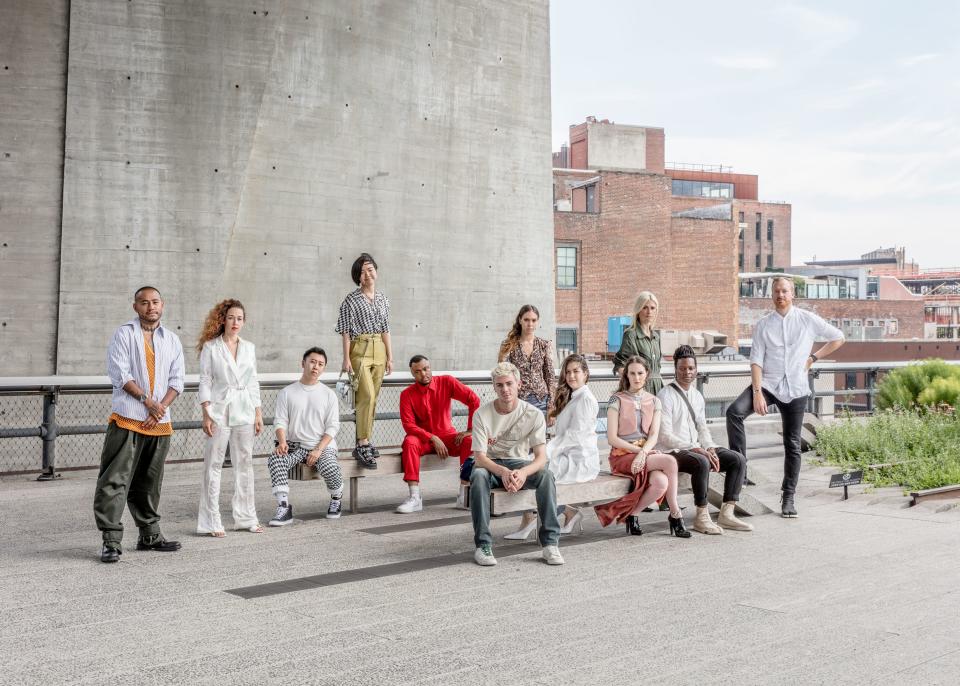
Originally Appeared on Vogue

